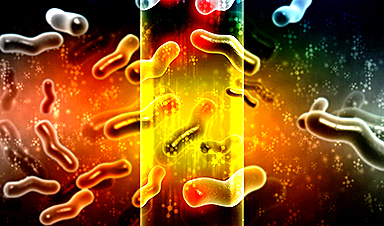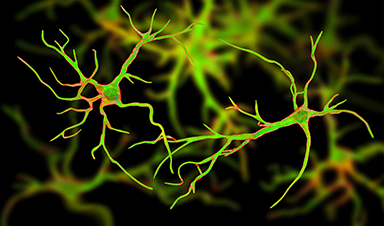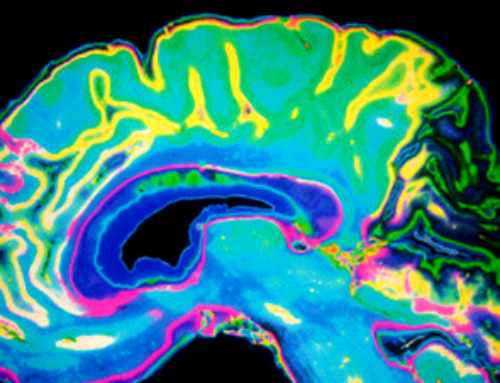New research published in the bioRxiv* preprint server suggests a small cationic peptide known as crotamine may inhibit the replication and transcription of severe acute respiratory syndrome coronavirus 2 (SARS-CoV-2). Crotamine in the D-enantiomer form successfully inhibited SARS-CoV-2 replication by targeting the C30 Endopeptidase (3CLpro protease).
Crotamine is found in rattlesnake Crotalus durissus terrificus venom and has analgesic, antibacterial, and hemolytic properties. Other drugs, such as Enalapril and Eptifibatide, are based on snake venom and approved by the U.S. Food & Drug Administration.
The advantage of the selected wild type was because of their cell penetration properties, even in D-enantiomer form, high stability and specificity, as well as selectivity against the target 3CL protease was observed,” concluded the research team.
Isolating the peptide and administering it at a low dose may help create a coronavirus disease 2019 (COVID-19) treatment for people with severe illness.
The study
The researchers expressed the SARS-CoV-2 3CLpro_GST fusion protein, needed for viral replication, on E.coli Lemo21 cells and later purified them. The viral protease was exposed to both crotamine and modified peptides with substituted cysteine residues known as L-CDP2-9 to determine the best inhibitor peptide.
First inhibition tests showed that L-CDP1, L-CDP2, L-CDP7, and L-CDP8 peptides had an 80% inhibition against the viral protease. They also tested the minimum concentration needed for crotamine to have a 100% inhibition against the 3CLpro protease. A 100% protease inhibition was achieved at 300 µM.
L-CDP1 caused complete inhibition of SARS-CoV-2 protease activity at 30 µM. A crotamine derivative with an amino acid substitution known as L-peptide-7 caused a 100% inhibition at 60 µM.
Substitutions of cysteine residues, specifically a substitution at position 36, increased L-CDP7’s inhibitory activity.
A fluorescence-based protease assay confirmed the peptide’s conformational shape during inhibition. L-CDP1, L-CDP7, and L-CDP8 peptides were found to be competitive inhibitors.
The results indicate that these peptides interact directly with amino acid residues located in the active site or with amino acids located in the substrate-binding region of the protease, preventing substrate entry to the active site,” explained the researchers.
To protect against degradation in L-enantiomer peptides, the research team created CDP1 and CDP7 in D-enantiomer form. The reasoning was that D peptides are more stable; L-CDP peptides can degrade from hydrolysis by proteases. Because the D-peptides were mirror images of L-peptides, the team predicted that binding affinity and their inhibitory effect should be similar. Results showed D-CDP1 and D-CDP7 are also competitive inhibitors. Though, D-CDP1’s interaction with the SARS-CoV-2 protease is ten times stronger than D-CDP7.
Based on the findings, the team next looked at L-CDP1’s and D-CDP1’s molecular docking efficiency using a web simulation. The simulations showed that amino acid residues of the viral protease interacted with ligand binding, suggesting a potential mode of interaction.
The amino acid residue, His41, appeared to interact with the hydrogen bond of L-CDP1’s Lys31 residues. The remaining amino acid residues are in the substrate-binding region, confirming the interaction is competitive inhibition.
D-CDP1, on the other hand, works by placing the peptide in the substrate-binding region, causing the protease’s active site to be blocked.
*Important notice
bioRxiv publishes preliminary scientific reports that are not peer-reviewed and, therefore, should not be regarded as conclusive, guide clinical practice/health-related behavior, or treated as established information.
News
Researchers highlight five pathways through which microplastics can harm the brain
Microplastics could be fueling neurodegenerative diseases like Alzheimer's and Parkinson's, with a new study highlighting five ways microplastics can trigger inflammation and damage in the brain. More than 57 million people live with dementia, [...]
Tiny Metal Nanodots Obliterate Cancer Cells While Largely Sparing Healthy Tissue
Scientists have developed tiny metal-oxide particles that push cancer cells past their stress limits while sparing healthy tissue. An international team led by RMIT University has developed tiny particles called nanodots, crafted from a metallic compound, [...]
Gold Nanoclusters Could Supercharge Quantum Computers
Researchers found that gold “super atoms” can behave like the atoms in top-tier quantum systems—only far easier to scale. These tiny clusters can be customized at the molecular level, offering a powerful, tunable foundation [...]
A single shot of HPV vaccine may be enough to fight cervical cancer, study finds
WASHINGTON -- A single HPV vaccination appears just as effective as two doses at preventing the viral infection that causes cervical cancer, researchers reported Wednesday. HPV, or human papillomavirus, is very common and spread [...]
New technique overcomes technological barrier in 3D brain imaging
Scientists at the Swiss Light Source SLS have succeeded in mapping a piece of brain tissue in 3D at unprecedented resolution using X-rays, non-destructively. The breakthrough overcomes a long-standing technological barrier that had limited [...]
Scientists Uncover Hidden Blood Pattern in Long COVID
Researchers found persistent microclot and NET structures in Long COVID blood that may explain long-lasting symptoms. Researchers examining Long COVID have identified a structural connection between circulating microclots and neutrophil extracellular traps (NETs). The [...]
This Cellular Trick Helps Cancer Spread, but Could Also Stop It
Groups of normal cbiells can sense far into their surroundings, helping explain cancer cell migration. Understanding this ability could lead to new ways to limit tumor spread. The tale of the princess and the [...]
New mRNA therapy targets drug-resistant pneumonia
Bacteria that multiply on surfaces are a major headache in health care when they gain a foothold on, for example, implants or in catheters. Researchers at Chalmers University of Technology in Sweden have found [...]
Current Heart Health Guidelines Are Failing To Catch a Deadly Genetic Killer
New research reveals that standard screening misses most people with a common inherited cholesterol disorder. A Mayo Clinic study reports that current genetic screening guidelines overlook most people who have familial hypercholesterolemia, an inherited disorder that [...]
Scientists Identify the Evolutionary “Purpose” of Consciousness
Summary: Researchers at Ruhr University Bochum explore why consciousness evolved and why different species developed it in distinct ways. By comparing humans with birds, they show that complex awareness may arise through different neural architectures yet [...]
Novel mRNA therapy curbs antibiotic-resistant infections in preclinical lung models
Researchers at the Icahn School of Medicine at Mount Sinai and collaborators have reported early success with a novel mRNA-based therapy designed to combat antibiotic-resistant bacteria. The findings, published in Nature Biotechnology, show that in [...]
New skin-permeable polymer delivers insulin without needles
A breakthrough zwitterionic polymer slips through the skin’s toughest barriers, carrying insulin deep into tissue and normalizing blood sugar, offering patients a painless alternative to daily injections. A recent study published in the journal Nature examines [...]
Multifunctional Nanogels: A Breakthrough in Antibacterial Strategies
Antibiotic resistance is a growing concern - from human health to crop survival. A new study successfully uses nanogels to target and almost entirely inhibit the bacteria P. Aeruginosa. Recently published in Angewandte Chemie, the study [...]
Nanoflowers rejuvenate old and damaged human cells by replacing their mitochondria
Biomedical researchers at Texas A&M University may have discovered a way to stop or even reverse the decline of cellular energy production—a finding that could have revolutionary effects across medicine. Dr. Akhilesh K. Gaharwar [...]
The Stunning New Push to Protect the Invisible 99% of Life
Scientists worldwide have joined forces to build the first-ever roadmap for conserving Earth’s vast invisible majority—microbes. Their new IUCN Specialist Group reframes conservation by elevating microbial life to the same urgency as plants and [...]
Scientists Find a Way to Help the Brain Clear Alzheimer’s Plaques Naturally
Scientists have discovered that the brain may have a built-in way to fight Alzheimer’s. By activating a protein called Sox9, researchers were able to switch on star-shaped brain cells known as astrocytes and turn them into [...]





















